If what you know about convertible soft tops is based on your experience joy riding in your dad’s Cadillac scissor top, you’ve got a whole lot of catching up to do.
Since the first real convertible top was introduced in the 1920s and drop tops saw a resurgence in the 1980s, the technology has grown by leaps and bounds. With more than 100 years in the business of developing soft top material, The Haartz Corporation has been at the forefront of this innovation.
We recently spoke to the Haartz team about why today’s convertible tops are nothing like those of yesteryear. Here’s what we learned:
1. Better Insulation
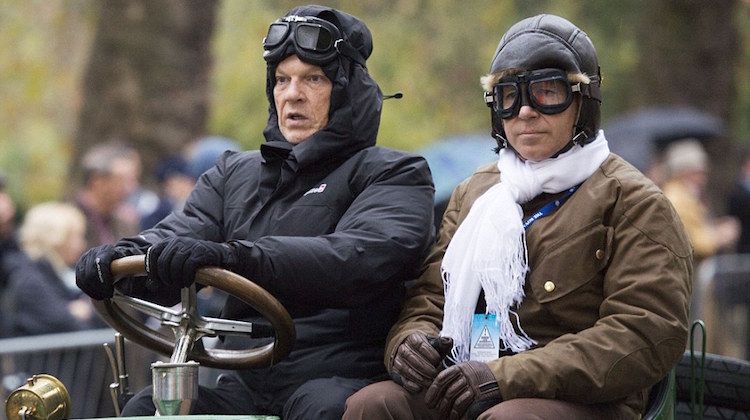
There was a time when convertible tops were so poorly insulated that owners could only drive them during the spring and summer months. Winter driving with the top up required drivers and passengers to crank up the heat and wear layers of clothing to protect against cold drafts. Worse still, some tops leaked water and snow.
That’s no longer the case. Today’s OEM-quality convertible tops are just as insulated as hard tops and entirely waterproof. That means you can keep your gloves and rain hats at home, as neither water nor cold wind will find its way into the cabin.
“Those who remember the drafty, American convertibles from decades ago are thinning out,” said Eric Haartz, CEO of The Haartz Corporation. “Kudos to Audi, BMW and Mercedes-Benz for advancing convertible technology in the tail end of the 20th century. Those three OEMs really improved the year-round functionality of convertibles in temperate climates.”
2. Quieter Than Ever
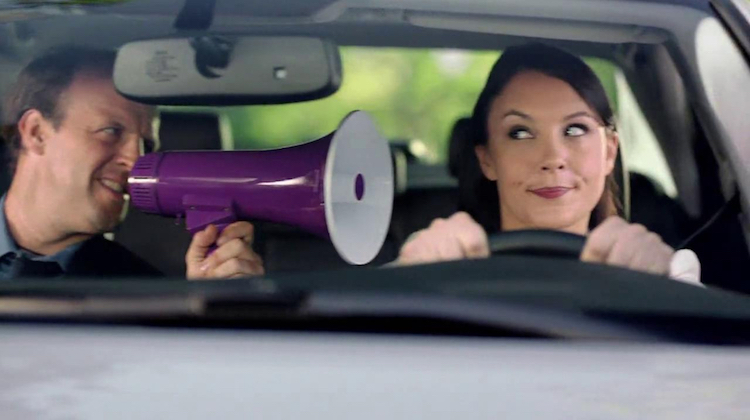
Remember when convertible tops used to let in so much wind and road noise that it made it difficult to listen to the radio? Not only that, but passengers had to shout at each other just to be heard.
Those days are long gone. Today’s OEM-quality convertible tops are developed with acoustic technology that makes their cabins comparable to those of traditional hard tops. That means you can comfortably listen to the radio at a low volume and even have normal conversations with passengers.
“Haartz is working closely with OEMs to optimize the balance of noise-blocking material while making sure we’re not adding extra weight to the vehicle,” said Matt Williams, director of business development at Haartz. “New developments in convertible soft top material have improved the sound-blocking performance by more than three decibels.”
In fact, Haartz’s offerings of Sonnenland A5B/DS and Twillfast® RPC are the world standard in acoustic topping.
3. More Eye-catching Designs
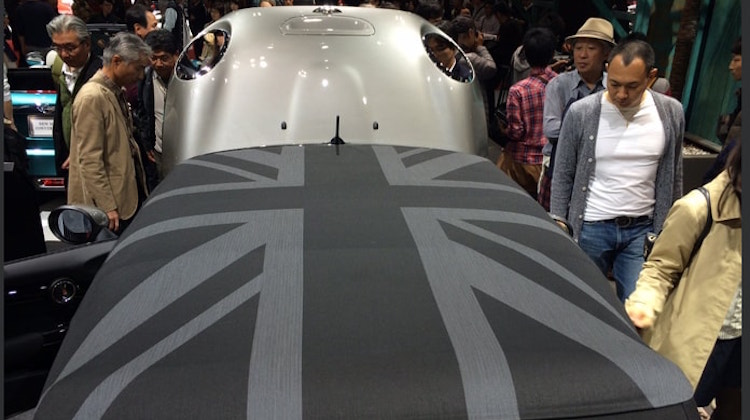
Convertible tops used to be a design afterthought — only available in select materials and colors. In short, that meant PVC tops in black, white or beige. Sure, they were functional, but didn’t offer much in the way of aesthetics. As a result, lots of people decided convertibles looked ugly with the top up.
If you attended this year’s Detroit auto show, you know that’s no longer true. Haartz, which tops nearly every convertible vehicle on the market, offers six topping fabrics ranging from traditional PVC to premium cloth. They’re available in different textures and a long list of eye-catching colors.
Moreover, Haartz has revolutionized soft top design with jacquard weaving technology. This allows them to customize tops with just about any pattern or image that automakers want.
“The current level of vehicle customization available to consumers is unprecedented,” said Williams. “We feel this opportunity shouldn’t be limited to the body and interior of vehicles — it should extend to the roof as well.”
4. Pioneering Technology
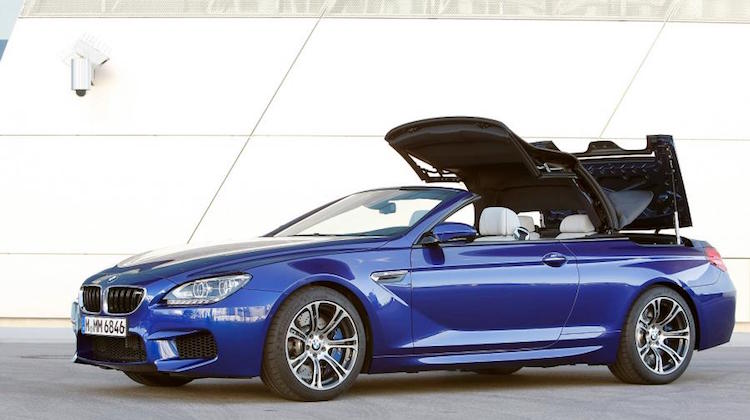
Once upon a time, convertible tops did little else than serve as a barrier against wind and inclement weather. While that certainly isn’t a bad thing, today’s convertible tops do so much more.
Haartz is on the forefront of technology, keeping soft top material in step with other automotive innovations. For example, Twillfast CR has a special butyl rubber inner-layer that minimizes the appearance of creases on a folded roof. That’s not all, Haartz has also developed topping that’s so light weight it enhances fuel efficiency, and has worked with infrared-reflective pigments to deflect the sun’s rays and keep cabins cool.
Haartz sees significant value in research and development, and is always seeking ways to make their topping more innovative and multi-functional.
“Our designers keep tabs on trends everywhere: automobiles, technology, fashion,” said Williams. “If convertible topping material can be presented in a new way, we want to be the pioneers.”
5. Superior Quality Materials
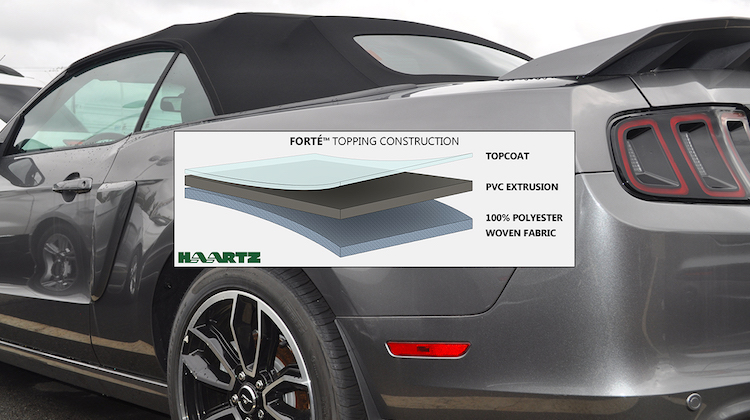
Convertible cars were once notorious for having soft tops that would fade under the sun, turn brittle, crack and tear easily. Of course, that spoiled the appeal of drop tops.
This is still true of subpar, knock-off convertible tops. But it’s definitely not true of tops manufactured using Haartz material, which are the best on the market.
To prove it, Haartz recently put its topping through rigorous quality-assurance tests – measuring color transfer, flexibility and inner layer cracking, water proofness, tensile strength, stretching and tearing. Unsurprisingly, Haartz out-performed competitors in every category.
“There are a number of imitation products flooding the aftermarket these days, many of which do not meet the stringent performance characteristics, such as UV resistance, abrasion resistance and dimensional stability that have been built into all Haartz products for generations,” said Phil Hollenbeck, senior account executive in automotive aftermarket at Haartz.
“With more than 100 years of building quality OEM and aftermarket products, our materials can be counted on to deliver the quality and reliability that discerning customers expect and demand without the use of restricted components.”
Haartz Corporation is a world leader in highly engineered and uniquely designed convertible toppings. To learn more about Haartz, visit Haartz.com and follow them on Facebook, Twitter and Instagram.
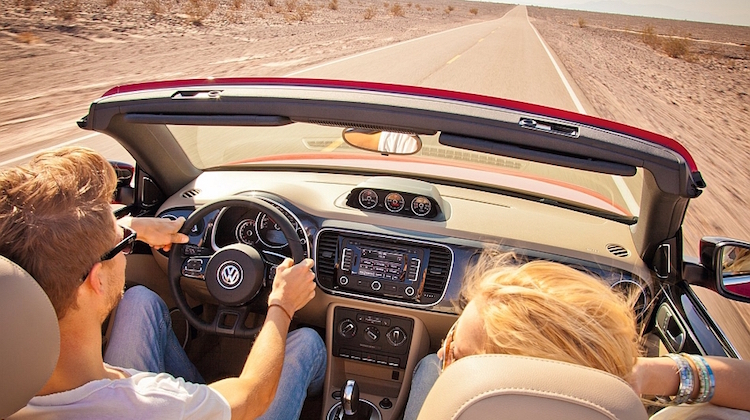
I would really like to Know if a bright white cloth top can be made. Only thing available is vinyl and that just won’t work for my application. Seems like someone should have a clean enough factory and machinery to produce such a material.
I own a 2011 Ford Mustang and it is in need of a new top. The exterior color is Ford’s Keona Blue with a white-stripe graphic on the lower portion of the doors. It presently has a black vinyl top and I would like to have a white top installed to match the white graphic. Everyone that I talk to says not to install a white top, “You will never be able to keep it clean.” I live in Pennsylvania and the car is only on the road from April to October; during the winter months, the car is properly “winterized”, covered and stored.
Can you suggest the correct top for this vehicle; i.e., vinyl or cloth? And can you tell me if a white top is an option for me or if I would be better to stay with the OEM black top? Finally, will you please suggest the correct cleaning and care products for whatever top that I choose?